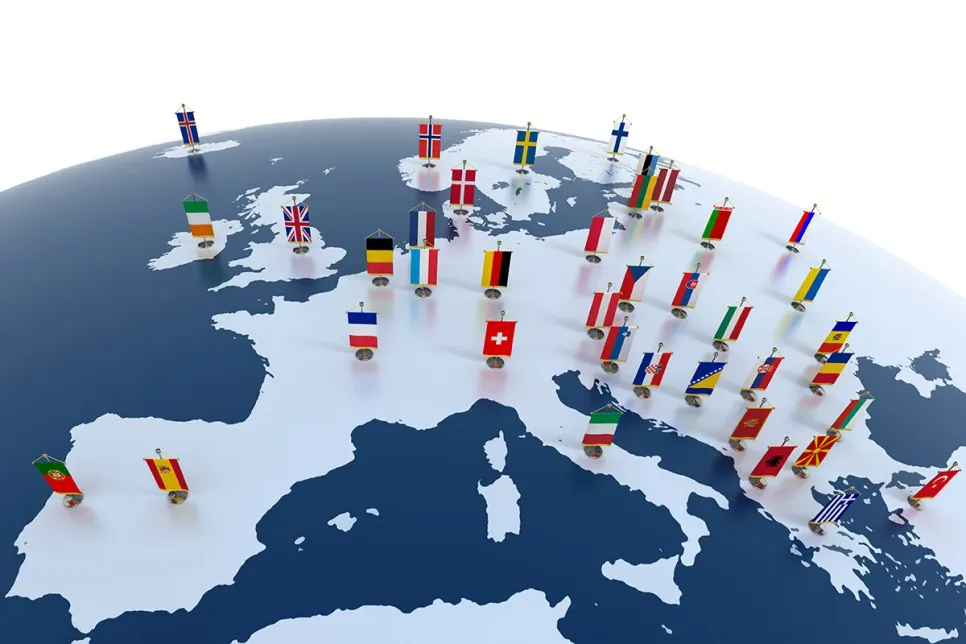PC Shipments Increased 4.4 Percent in 2Q25
Worldwide PC shipments totaled more than 63 million units in the second quarter of 2025, a 4.4% increase from the second quarter of 2024, according to preliminary results by Gartner.

The European technology, media, and telecommunications (TMT) sector is at a pivotal moment. Once a dominant global force, it has faced prolonged stagnation and loss of competitiveness, leading to a dramatic drop in global market relevance. Yet, despite missed opportunities, new research shows Europe could stage a major comeback if it successfully invests in five critical growth areas.
Since the early 2000s, Europe’s TMT landscape has eroded relative to global peers. In 2000, companies from the sector accounted for 30% of global market capitalization, and by 2024, that figure had fallen to just 7%. Meanwhile, the global TMT sector grew from $7 trillion to $34 trillion in total market capitalization. Europe’s presence among the 50 most valuable global companies shrank from 22 to only 4.
While European TMT revenue tripled over the past 20 years, the global sector experienced a fivefold increase. The result is what analysts estimate as an $8 trillion missed value opportunity for Europe since 2000—a figure that underscores the urgency of revitalizing the sector.
Despite this decline, the potential for a TMT revival is real. A recent study outlines five strategic areas—termed “battlegrounds”—that could unlock nearly $800 billion in incremental market value by 2030. These include content and commerce, artificial intelligence and next-generation software, data infrastructure, tech services, and connectivity.
Current annual TMT spending in Europe is around $1.9 billion and is forecasted to grow to $2.7 billion by 2030, driven by investments in these battlegrounds.
However, Europe’s ability to capitalize on these opportunities is not without challenges. Structural issues—such as market fragmentation, limited investment capital, and regulatory burdens—continue to hinder innovation and scale.
Executives across the continent are increasingly vocal about how EU regulatory frameworks, though designed for consumer protection, often stifle innovation and prevent rapid growth. In addition, geopolitical tensions, including trade restrictions and the push for technological sovereignty, further complicate expansion strategies.
The European Commission’s “Digital Compass 2030” has laid out a vision for digital leadership, including establishing a pan-European data processing infrastructure. To meet this vision, Europe needs over $130 billion in annual investment to close its infrastructure gap. Sovereign cloud initiatives and AI development are central to this strategy, enabling data sovereignty while meeting regulatory compliance.
European TMT leaders are under no illusions about the challenges. A full 92% of surveyed executives agree that Europe has not played a pioneering role in TMT over the past decade. Nevertheless, 85% believe the region could become a global trendsetter within the next ten years if the right investments are made.
AI and next-gen software are considered both the greatest opportunity and the most significant risk. Many companies that prioritize software are growing twice as fast as their peers, highlighting how crucial digital capabilities are for future competitiveness.
Scaling software businesses remains a critical challenge. Fragmented markets, long sales cycles, and high regulatory complexity continue to slow growth. But with the sector expected to generate $310 billion in additional spending by 2030, overcoming these obstacles could yield transformative benefits for Europe’s digital economy.
The discrepancy between potential and performance is obvious in AI adoption. While the UK leads in B2B AI usage, the rest of Europe lags. Better harmonization of regulation and capital allocation could unlock faster adoption.
The connectivity sector’s modest growth forecast underscores the need to pivot. For telcos, traditional models are not delivering. ServCos face anemic growth in core services, while NetCos—leaner and more asset-focused—are better positioned for expansion. Consumer openness to buying related digital services offers new monetization paths, but only if telcos can deliver differentiated value.
The data infrastructure space, dominated by global hyperscalers, poses another dilemma. Europe’s dependence on foreign providers threatens its digital sovereignty goals. To compete, Europe must accelerate investment in local cloud, edge, and interconnection capacity.
Tech services providers have a crucial enabling role. With 60% of their revenue projected to depend on tech partnerships by 2027, collaboration, not competition, is key. Successful providers will focus on co-developing tailored solutions with software vendors, especially in industry-specific verticals like healthcare, finance, and energy.
Market fragmentation remains a concern, with nearly half of the surveyed executives citing it as a barrier to scale. Overcoming it will require not just regulation reform but also ecosystem-wide alignment on standards, APIs, and procurement models.
The future of Europe’s TMT sector hinges on bold action. While the region has lost significant ground to North American and Asian peers, it retains key strengths—talent, research institutions, and an emerging policy consensus around digital sovereignty.
Unlocking the $800 billion opportunity outlined in the report will depend on Europe’s ability to confront structural hurdles, embrace innovation, and coordinate investments across both private and public sectors.
The path to revitalization is narrow but clear. The question is not whether Europe can compete, but whether it will choose to.